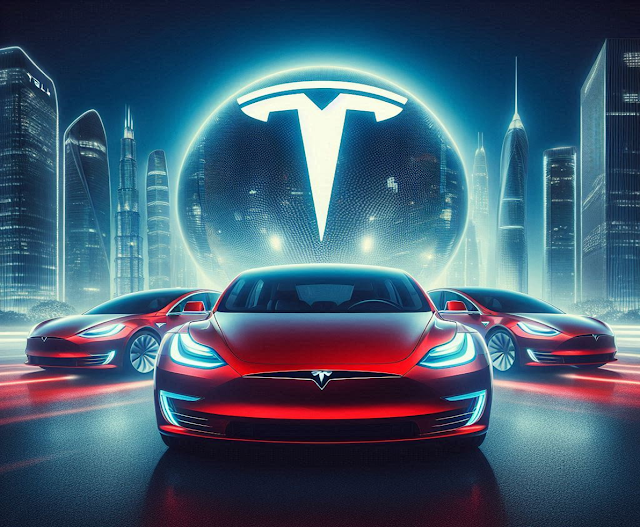Trump's War on China: Can India Rise from the Ashes of Economic Warfare?
Prologue: The Trade War That Shook the World
In 2018, a war erupted. Not with tanks, not with missiles, but with tariffs and technology bans. The battlefield? Global trade. The warriors? The United States and China. And the man who declared this war? None other than Donald J. Trump.
For decades, China had been the factory of the world, supplying cheap goods to the U.S. and enjoying a massive trade surplus. But Trump decided to flip the script. He slammed China with heavy tariffs, blacklisted tech companies, and waged an economic war that sent shockwaves across the world. This wasn’t just a simple trade dispute, it was a full-blown battle for economic dominance.
But here’s the real question: As the U.S. and China locked horns, could India quietly position itself as the next global superpower? Could India turn this war into an opportunity to rise like never before?
Chapter 1: How the U.S. Became the World’s Economic Superpower
1. Post-WWII Economic Boom
After World War II, while most of Europe and Asia were struggling to rebuild, the U.S. emerged as the world’s dominant economy. The Marshall Plan, a massive economic aid program, helped reconstruct war-torn European nations, ensuring that American industries had a steady demand for their goods. This was not just an act of generosity, it was a strategic move. By rebuilding Europe, the U.S. created new markets for its own products, strengthening its economic influence across the world.
Simultaneously, the U.S. dollar became the global reserve currency through the Bretton Woods Agreement in 1944. This meant that most international trade was conducted in U.S. dollars, ensuring America’s financial dominance for decades to come.
2. The Birth of Global Trade Organizations
The U.S. played a key role in creating institutions like the World Bank, International Monetary Fund (IMF), and the World Trade Organization (WTO). These organizations helped the U.S. control global trade policies, ensuring that American businesses had the upper hand. For instance, if a developing country wanted loans from the IMF or World Bank, it had to follow economic policies largely dictated by the U.S. This allowed America to shape the global economic landscape in its favour.
3. The Tech Boom and The Rise of Wall Street
The 1980s and 1990s saw the rise of Silicon Valley, turning the U.S. into a technological superpower. Companies like Microsoft, Apple, Google, and Amazon revolutionized industries, creating an era where American innovation dominated the world. At the same time, Wall Street became the financial nerve center of the world, attracting trillions in investments. The New York Stock Exchange and NASDAQ became symbols of global capitalism, further cementing U.S. economic dominance.
For decades, America was the undisputed global superpower. But then, a new challenger emerged - China!
Chapter 2: The Rise of China as an Economic Giant
1. The Opening Up of China
For most of the 20th century, China was a closed communist economy, struggling with poverty and stagnation. But everything changed in 1978, when Deng Xiaoping, the Premier of China, introduced economic reforms that transformed the nation. Deng’s policies allowed private businesses, foreign investments, and free-market principles, something that was unthinkable in communist China before.
Deng’s famous quote, "To get rich is glorious", signaled a new era for China. Under his leadership, China slowly transitioned from a state-controlled economy to a hybrid economic model where private enterprises could thrive under government supervision.
2. The Factory of the World
By the 2000s, China had become the world's factory. Everything from iPhones to clothes to industrial machinery was being produced in China at an unprecedented scale. The country’s GDP skyrocketed, lifting millions out of poverty. China achieved this by offering cheap labor, tax breaks, and government subsidies to attract global companies. Tech giants like Apple, Dell, and HP moved their manufacturing to China, further strengthening its economic position.
3. The Belt and Road Initiative (BRI)
In 2013, China launched the Belt and Road Initiative, a massive infrastructure project aimed at expanding China’s influence across Asia, Africa, and Europe. By building highways, railroads, and ports in developing countries, China gained economic and strategic control over global trade routes, challenging U.S. dominance.
4. The Tech Revolution
China is no longer just a manufacturing hub, it is rapidly transforming into a tech superpower. Companies like Huawei, Tencent, and Alibaba are leading the charge in AI, 5G, and fintech. The Chinese government has invested heavily in semiconductor technology, quantum computing, and space exploration, aiming to surpass the U.S. in cutting-edge innovation.
But as China rose, it also started clashing with the U.S, leading to the trade war we see today.
Chapter 3: Why Did Trump Start a Trade War with China?
To understand Trump’s war on China, we need to look at the man himself. Trump is a businessman first and a politician second. And in his eyes, China was playing a dirty game. For decades, China had been accused of currency manipulation, intellectual property theft, and unfair trade practices. American companies would set up factories in China, and within months, Chinese knock-offs would flood the market.
Trump had had enough. He wanted to stop China’s rise before it was too late. And so, he launched a trade war. How? By imposing tariffs - essentially, taxes on imports. When the U.S. put tariffs on Chinese goods, it made those products more expensive in the American market. This forced American companies to either absorb the cost or shift manufacturing elsewhere.
Let's say a Chinese-made car normally sells in the U.S. for $20,000. If a 25% tariff is applied, that import tax adds $5,000, raising its price to $25,000. Now imagine a comparable car made in the United States costs $23,000 because it doesn’t incur that extra tariff. Because the U.S. car is now cheaper than the Chinese-made car ($23,000 vs. $25,000), American consumers might prefer buying the domestic option. This simple scenario shows how tariffs on Chinese cars can shift demand in favour of U.S. production, helping domestic manufacturers grow and supporting local jobs.
But tariffs weren’t the only weapon in Trump’s arsenal. He also went after China’s tech industry. And that’s where things got really intense.
Chapter 4: How China Became the World’s Tech Thief
China’s rise as a tech powerhouse didn’t happen naturally. A big chunk of its success came from… let’s just say, 'stealing' technology from the West. American companies that wanted to operate in China were often forced to share their intellectual property. China also had an army of cyber spies hacking into American companies and stealing blueprints, software, and trade secrets.
Some of the biggest scandals include:
1. Micron vs. China
Micron, a leading American chipmaker, accused a Chinese company of stealing its semiconductor designs and then launching a competing product. This was uncovered when a suspicious laptop was found at a Micron facility, containing stolen blueprints. The U.S. government launched an investigation, eventually banning the Chinese firm involved.
2. Huawei and the 5G Controversy
Huawei, the Chinese telecom giant, was accused of embedding backdoors in its 5G equipment, potentially allowing the Chinese government to spy on global communications. The Trump administration responded by banning Huawei in 2019, citing national security concerns. Trump himself stated, "We cannot let a foreign adversary control our critical infrastructure." Trump’s administration saw all of this as an existential threat. China wasn’t just selling cheap goods anymore, it was actively trying to dominate the future of technology.
And so, Trump hit China where it hurt the most.
Chapter 5: Trump's Second Term Plans
On February 1, 2025, President Trump signed Executive Order 14195, which established a 10% tariff on all Chinese imports, to address the synthetic opioid crisis linked to China’s export of precursor chemicals. The Chinese government, in turn, retaliated on February 10 by imposing tariffs on key U.S. products, including agricultural machinery and energy resources. Just a month later, on March 4, Trump raised the tariff on Chinese goods from 10% to 20%, signaling a deepening of the trade war.
Trump’s second-term plan for the China trade war is multifaceted. It escalates tariffs on Chinese goods while simultaneously seeking to realign global supply chains and pressure key U.S. allies to participate in a coordinated trade strategy. The administration’s approach, tying tariffs to national security concerns aims to justify aggressive measures domestically and internationally. While the short-term impact may include higher prices and temporary supply chain disruptions, the longer-term consequences could reshape global trade dynamics, pushing the international community toward a more fragmented and protectionist economic order.
On April 2, 2025, President Donald Trump proclaimed April 2 as "Liberation Day," unveiling a new tariff strategy aimed at addressing trade imbalances and protecting U.S. industries. This policy introduces a universal 10% tariff on all imported goods, effective April 5, 2025, and imposes higher, country-specific "reciprocal" tariffs on nations with substantial trade deficits with the U.S., starting April 9, 2025. Notable tariff rates include 54% on Chinese imports, 46% on Vietnamese goods, 24% on Japanese products, and 20% on European Union exports. The United Kingdom faces a 10% tariff, while India is subjected to a 26% tariff. These measures have elicited strong reactions globally, with leaders from affected countries expressing deep concern and contemplating retaliatory actions. Economists warn of potential inflationary effects and the risk of escalating trade tensions leading to a global trade war.
Chapter 6: India’s Missed Opportunity
1. Why India Should Have Benefited
When Trump started his trade war with China, many companies began looking for alternative manufacturing hubs to escape U.S. tariffs. This should have been India's golden moment. India had cheap labour, a massive workforce, and a fast-growing economy. On paper, it looked like the perfect alternative to China.
2. Why India Struggled to Seize the Opportunity
But India failed to capitalize on this moment due to bureaucracy, lack of infrastructure, and complex regulations. While Vietnam, Indonesia, and Mexico rapidly adapted to attract foreign investments, India lagged behind. Even though India has enormous potential, issues like land acquisition problems, slow government approvals, and inconsistent policies made it difficult for companies to shift their operations from China to India.
3. The Modi Government’s Efforts
The Indian government, under Prime Minister Narendra Modi, has launched initiatives like 'Make in India' and Production Linked Incentives (PLI) to attract global businesses. While some progress has been made, India still has a long way to go before it can truly challenge China in manufacturing.
Conclusion: Can India Rise?
The U.S.-China trade war has created a rare opportunity for India to emerge as a global superpower. But to seize it, India must overcome its internal challenges and build a business-friendly environment. If India plays its cards right, it could become the next global manufacturing hub, a technological powerhouse, and an economic superpower. But if it fails, China will continue to dominate, and the U.S. will look elsewhere for allies in its economic war against Beijing.
The clock is ticking. Will India rise to the occasion? Only time will tell.




Comments
Post a Comment